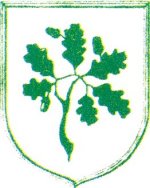|
Guide to Bach Tour
Langula [V] |
|
Contents |
|
Description | History
J.S. Bach: Connection | Events in Life History | Performance Dates of Vocal Works | Festivals & Cantata Series
Features of Interest | Information & Links
Photos: Part 1 | Maps |
|
 |
|
Description |
|
Langula is a village and a former municipality in the Unstrut-Hainich district of Thuringia, Germany. Since December 31, 2012, it is a district of the rural municipality Vogtei. |
|
Country: Germany | State: | District: Unstrut-Hainich-Kreis | Municipality: Vogtei | Area: 15.16 km² | Population: 1037 (December 2011) |
|
History |
|
Geography |
|
The location of Langula is located on the western edge of the Thuringian Basin, about 7 km from Mühlhausen / Thuringia and about 20 km northwest of Bad Langensalza at an altitude of about 240 m (church). The district includes in the west, however, large forests of Hainich. With a peak height of 468.3 m above sea level. HN is the Winterstein am Hainich-Rennstieg therefore the highest elevation of Langula. The place is located near the center of Germany. |
|
History |
|
On July 10, 1278 the place is first mentioned in a document. It belonged to the Vogtei Dorla. Since 1643 the place was known in the field of church music. In 1707 J.S. Bach and the then Kantor Adam Jakob Schröter established closer relations and met with him several times at the Alten Schule am Anger. From 1911 to 1969 led with the Vogteier Bimmel a 31.79 km long railway line from Mühlhausen to Treffurt by the Langulaer Tal in western Langula. The railway line is preserved to this day. A section of the Unstrut-Werra Cycle Route, which is important for tourism in the region, runs along it. The municipality Langula joined on December 31, 2012 together with other communities of Verwaltungsgemeinschaft Vogtei to the new community Vogtei. |
|
Sons and daughters of the village |
|
Fritz Janson (1885-1946), local politician and mayor of Eisenach
Jörg Hofmann (b 1939), former professor for violin
Source: mostly Wikipedia (April 2018), BCW |
| |
|
Bach Connection (1707-1708?) |
|
The village of Langula, located ca. 9 km/s .5 miles southwest of Mühlhausen, was first associated with J.S. Bach by Philipp Spitta (1841-1894). In his monumental biography of the composer, P. Spitta remarked that J.S. Bach “was not unmindful of the state of music in the immediate neighborhood, and he must have noticed that often more material of a better kind for the church was available there than in the town itself.” He continued: “Among the surrounding villages Langula, however, has been distinguished from the beginning of the 18th century to the present time [c1870] by having a succession of well-qualified kantors and an active feeling for music” (P. Spitta 1883: 343).
P. Spitta was clearly alluding here to a statement by J.S. Bach himself who, in requesting his dismissal from his Mühlhausen post after only a year of service, referred famously to the “hindrance” (Wiedrigkeit) that frustrated him there but also to “the church music that is growing up in almost every township, and often better than the harmony that is fashioned here” (NBR, no. 32).
P. Spitta also claimed to have “discovered in the ‘Cantorei’ (the cantor’s house),” a J.S. Bach composition “apparently belonging to his Mühlhausen time. It is incomplete and is adorned with some certain and other apparent additions by later kantors of Langula; still it offers some genuine matter for the consideration of the historian” (P. Spitta 1883: 343f).
The cantata was known to P. Spitta only in two fragmentary sources, both now lost. One was a copy in the hand of the Langula kantor at the time, Herr Sachs. The opening chorus was missing; the text of the following duet, “Meine Seele soll Gott loben,” serves as the work title in the BWV catalog, where it carries the number BWV 223. In the meantime, a recently discovered manuscript of the entire composition in the British Library attributes it to George Frideric Handel. Closer inspection indicates that the work is in fact almost certainly not by J.S. Bach or G.F. Handel (Marx 2004).
The Langula "Kantorei" is an L-shaped, half-timber house next to Langula's St. George’s Church. The church nave is a mid-19th-century replacement for a much older building, of which only the tower survives. The "Kantorei" today houses a museum of local history, a charming hodgepodge of furniture, utensils and tools, historic clothing, and memorabilia. It bears a plaque that reads, “In 1707 Johann Sebastian Bach stayed in this house.”
Literature: NBR; Spitta 1883; BWV; Marx 2004; Meiflner 2007.
Source: Robert L. Marshall & Traute M. Marshall: Exploring the World of J.S. Bach - A Traveller's Guide (University of Illinois Press, 2016), pp 164-165 |
|
Events in Life History of J.S. Bach: See above, |
|
Performance Dates of J.S. Bach’s Vocal Works : None. |
|
Bach Festivals & Cantata Series: None. |
| |
|
Features of Interest |
|
Worth seeing are the Kirche (church), which was built from 1842 to 1845 and restored in 2004/2005, as well as the village green with the war memorial and the court table, as well as the scenic surroundings. Hiking trails lead to Lehdeborn, a source on the western edge of the Hainich, and to Lehdebornlinde. The tree is a protected summer linden and is one of the striking trees of Hainich. On the Hainichkamm in the west, the district Langula is cut from the Rennstieg, an old altitude and today's regional trail. |
|
Information & Links |
|
Langula (Wikipedia) [German]
Langula (Wikipedia) [English] |
| |
|
Prepared by Aryeh Oron (April 2018) |